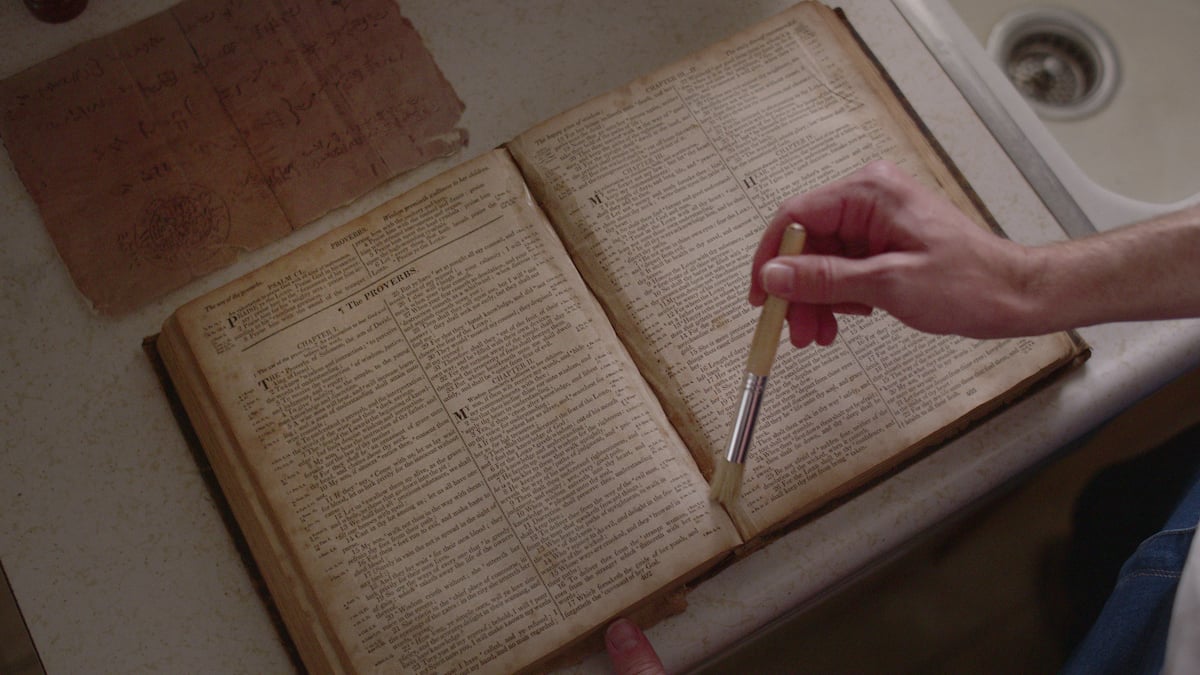‘Murder Among the Mormons’: What Does the Salamander Letter Say?
Once again, Joe Berlinger brings Netflix subscribers another compelling true crime docuseries. Berlinger’s other projects include Conversations with a Killer: The Ted Bundy Tape. Later, he brought us the film Extremely Wicked, Shockingly Evil and Vile starring Zac Efron. More recently, Berlinger debuted Crime Scene: The Vanishing at the Cecil Hotel on Netflix. Now, Berlinger is bringing fans inside the 1985 bombings in the Mormon community with Murder Among the Mormons.

The three-part series glosses over the origins of the Mormon church. Instead, the docuseries focuses on the documents Mark Hoffman discovered regarding the Latter Day Saints movement. One of those documents was the “Salamander Letter,” a controversial document about the basis of Mormonism. After learning of the document in the series, many people want to know what the Salamander Letter says.
[SPOILERS AHEAD]: This story contains spoilers regarding the three-part Netflix series Murder Among the Mormons].
‘Murder Among the Mormons’ covers the October 1985 bombings in Salt Lake City, Utah
Berlinger’s latest true crime series follows the life and work of Mark Hoffman, one of the most accomplished forgers ever. Growing up in Salt Lake City, Hoffman was raised in the Mormon church. As he started to question his religious beliefs, Hoffman realized he could take advantage of believers. He began forging historical documents, including ones penned by Mormon founder Joseph Smith and other notable historical figures.

Hoffman was successful for a while. He sold various forged documents for thousands of dollars, but eventually, his scheme started to unravel. When Hoffman started to feel threatened that Steve Christensen and J. Gary Sheets would expose his forgery operation, he constructed homemade bombs. Hoffman’s bombs killed Christensen and Sheets’ wife Kathy. Hoffman used the third bomb in an attempted suicide.
The Salamander Letter Mark Hoffman forged contests Mormon beliefs
Mormons believe an angel named Moroni led Joseph Smith to a book of golden plates that were later translated to The Book of Mormon. The Salamander Letter directly contests this story, and instead states Smith was led to the golden plates by a “spirit who transfigured himself from a white salamander.” Hoffman claimed the letter was written by Martin Harris, a scribe for Smith, in 1830. The Salamander Letter was controversial because it changed Mormon beliefs from a traditional Christian narrative into folklore and magic.
What does Mark Hoffman’s Salamander Letter say?
The Salamander Letter, which has since been published in books like Practice to Deceive: The Amazing Stories of Literary Forgery’s Most Notorious Practitioners, is dated Oct. 23, 1830. It recounts Harris’ meeting of Smith in the summer of 1824. Smith told Harris he could “see anything he wishes by looking at a stone.”
In the letter, Harris recounts Smith’s discovery of a “gold bible” in 1827. “I found it four years ago with my stone, but only just got it because of the enchantment the old spirit,” Smith tells Harris. According to Harris’ writing, a spirit appeared to Smith in a dream three times. When he awoke, the spirit “transfigured himself from a white salamander, struck [him three] times, and would not let [him have the gold plates].” The letter concludes:
About the middle of June 1829, [Smith] takes me together with Oliver Cowdery [and] David Whitmer to have a view of the plates. Our names are appended to the book of Mormon, which I had printed with my own money — space and time both prevent me from writing more at present.”


